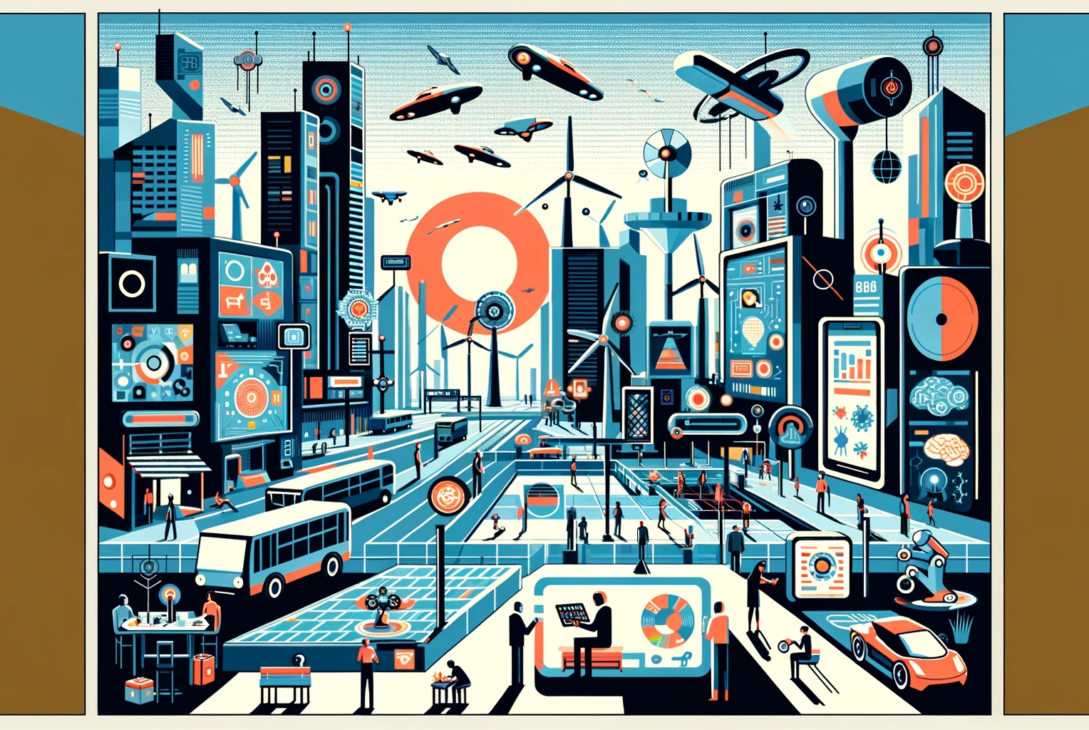In this comprehensive exploration, we journey into a future defined by technological wonders and unforeseen challenges. Discover how a post-scarcity society, fueled by advancements in AI, renewable energy, and medical technology, navigates the resolution of historical human struggles. Simultaneously, delve into the intricate dilemmas that arise, from finding new purpose and maintaining human connections to addressing existential questions in an era where technology dictates every aspect of life.
Eradicating Resource Scarcity
The foundation of a post-scarcity world lies in the technological mastery over resources. Advanced AI algorithms, coupled with breakthroughs in material science, have enabled us to efficiently utilize and recycle resources. Innovations in nanotechnology and 3D printing allow for the on-demand production of goods, reducing waste and inefficiency in production processes.
Renewable energy technologies, especially advancements in solar, wind, and nuclear fusion, have played a pivotal role. The development of compact, efficient fusion reactors, in particular, has been a game-changer, providing abundant, clean energy. This energy abundance has, in turn, made desalination and water purification processes more accessible, addressing water scarcity issues globally.
Eliminating Poverty
The eradication of poverty in a post-scarcity world is intrinsically linked to the availability and equitable distribution of resources. Universal Basic Income (UBI), enabled by the wealth generated through automated systems, has become a reality. With basic needs met, individuals are no longer compelled to engage in menial jobs for survival, which has drastically reduced poverty levels.
The role of AI in economic management has been crucial. Intelligent systems analyze market trends, predict shortages, and help in the fair distribution of resources. These AI systems have been instrumental in stabilizing economies, ensuring that the wealth generated by automated industries is appropriately redistributed.
Conquering Diseases
In the medical field, technology has made leaps and bounds. Genetic engineering, particularly CRISPR technology, has enabled us to edit genes with precision, leading to the eradication of many hereditary diseases. Nanomedicine has allowed for targeted drug delivery systems, increasing the effectiveness of treatments while minimizing side effects.
Telemedicine and AI-powered diagnostic tools have made healthcare accessible in remote areas, reducing health disparities. Advances in regenerative medicine, including the growth of organs in labs, have nearly eliminated the need for organ donors and have drastically reduced organ transplant waiting lists.
Automation and Employment
One of the most significant impacts of technology in a post-scarcity society is on employment. Automation and AI have taken over a majority of manual and repetitive tasks. While this has led to the elimination of many traditional jobs, it has also given rise to new career fields in AI management, robotics, and more.
The shift has been from labor-intensive jobs to more creative and supervisory roles that oversee automated processes. Education systems have evolved to prepare individuals for these new challenges, focusing more on critical thinking, creativity, and emotional intelligence rather than rote learning.
The New Economic Models
In a world where scarcity is no longer the driving force, traditional economic models have undergone a transformation. The value is now placed more on innovation and creativity rather than production and acquisition of resources. Digital currencies and decentralized financial systems have become prevalent, offering more stability and efficiency in transactions.
The rise of the sharing economy and collaborative consumption has reduced the need for ownership of goods. With the ability to produce most goods on demand, the concept of ownership has transitioned more towards experiences and intellectual property.
The Challenge of Boredom
In a world where the struggle for survival is a thing of the past, and basic needs are readily met, a new adversary emerges: boredom. The human psyche, driven for millennia by the need to overcome challenges, finds itself in uncharted territory. Technology, having automated most tasks, leaves individuals with an abundance of leisure time.

Virtual reality (VR) and augmented reality (AR) technologies have risen to meet this challenge, offering immersive experiences that range from recreational to educational. However, the question remains whether these virtual experiences can fully replace the sense of achievement that comes from real-world accomplishments.
Searching for Purpose
With survival needs met and labor largely automated, the quest for purpose becomes more pronounced. In a post-scarcity society, individuals grapple with finding meaning beyond materialistic pursuits. The focus shifts to self-actualization, artistic expression, and exploration of the human condition.
This shift has led to a renaissance in arts, philosophy, and science. People now have the time and resources to pursue their passions and contribute to these fields in unprecedented ways. However, there remains a segment of the population struggling to find their place in a world where traditional roles and labor are no longer necessary.
Addressing Existential Questions
The resolution of material challenges in a post-scarcity world directs attention towards existential questions. What is the purpose of humanity in a world where survival is no longer a concern? These questions have led to a surge in interest in space exploration, seeking to understand our place in the universe.
Furthermore, advanced AI systems, while beneficial, also raise questions about the nature of consciousness and what it means to be human. The boundary between human and machine intelligence becomes blurred, compelling society to reevaluate its understanding of consciousness and self.
Managing Technological Dependency
An undeniable challenge in this new era is the increasing dependency on technology. While technology has solved many problems, it has also created a society reliant on its continuous functioning. The threat of system failures, cyber attacks, or unforeseen malfunctions poses significant risks.
There is a growing movement advocating for the development of sustainable, self-sufficient communities that can operate independently of global technological systems. These communities focus on resilience and the ability to adapt to technological disruptions.
Nurturing Human Connections
In a world dominated by technology, the importance of human connection becomes more evident. Social media and communication technologies, while keeping us connected, often lack the depth of face-to-face interactions. There is a heightened awareness of the need for genuine human connections and community-building.
Programs and initiatives aimed at fostering community engagement and real-life interactions have gained popularity. These efforts strive to maintain a balance between technological advancement and the preservation of human relationships and community values.
The Evolution of Education
Education in a post-scarcity world has evolved to meet the new challenges. With information readily available, the focus of education has shifted from knowledge acquisition to skill development, particularly in critical thinking, emotional intelligence, and creative problem-solving.
Lifelong learning has become a norm, with individuals continuously updating their skills to keep pace with technological advancements. Education systems have become more flexible and personalized, leveraging AI to cater to individual learning styles and needs.
Embracing Sustainability and Environmental Stewardship
Finally, in a post-scarcity world, the focus has shifted to sustainability and environmental stewardship. Technology has not only provided solutions to environmental challenges but also created an awareness of the need to maintain harmony with nature.
Innovations in biotechnology and material science have led to the development of eco-friendly and sustainable materials. Smart cities, designed with an emphasis on sustainability, utilize technology to reduce their environmental impact while enhancing the quality of life for their residents.
Conclusion
The age of post-scarcity, brought about by technological advancements, presents a paradoxical narrative. On one hand, it offers solutions to age-old problems of resource scarcity, poverty, and disease. On the other, it introduces new challenges that question the very fabric of human existence. As we navigate this new era, the focus shifts from mere survival to a deeper understanding of our place in the universe, the nature of our consciousness, and the preservation of our planet and human connections. This journey is not just about embracing technological advancements but also about rediscovering what it means to be human in an ever-evolving world.




